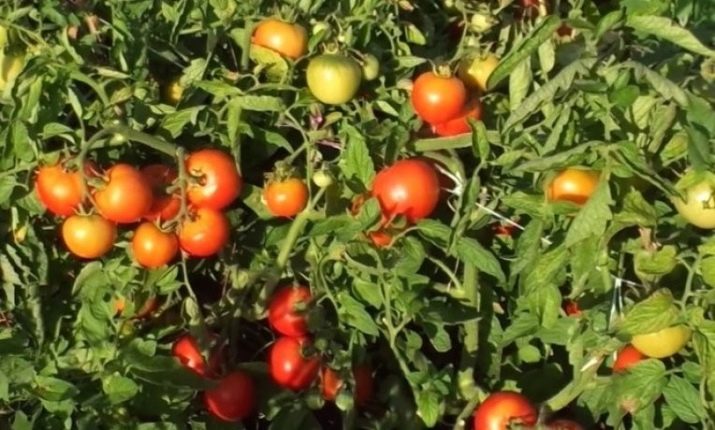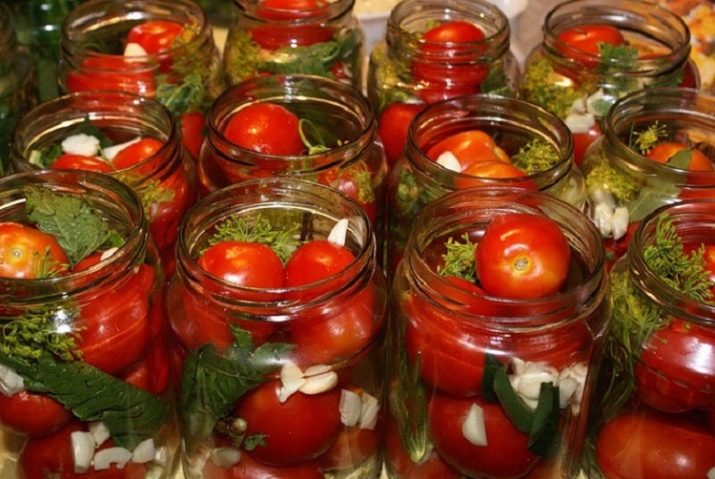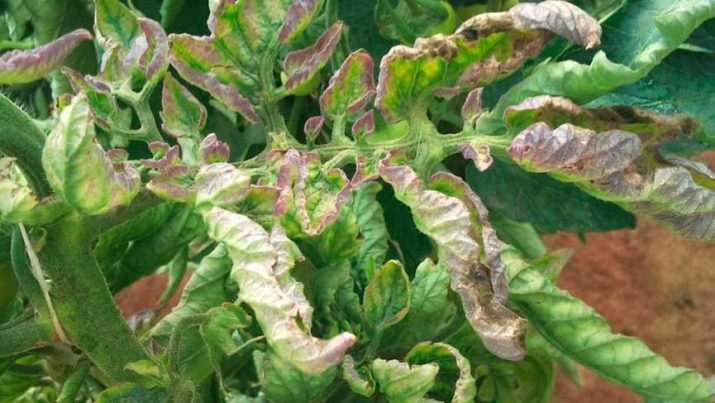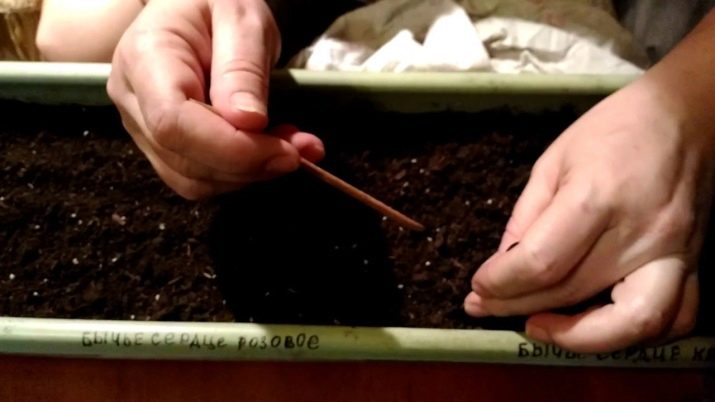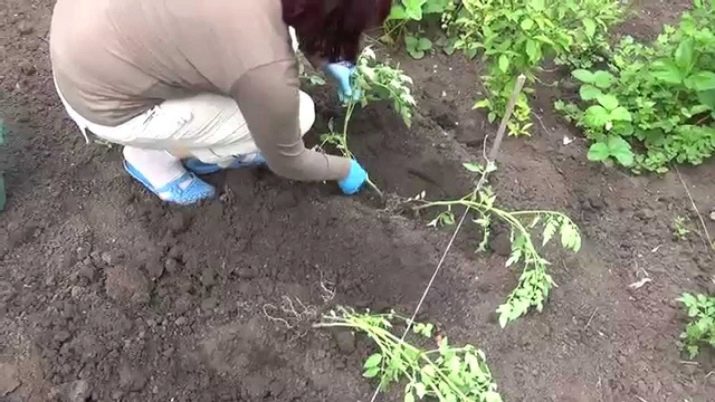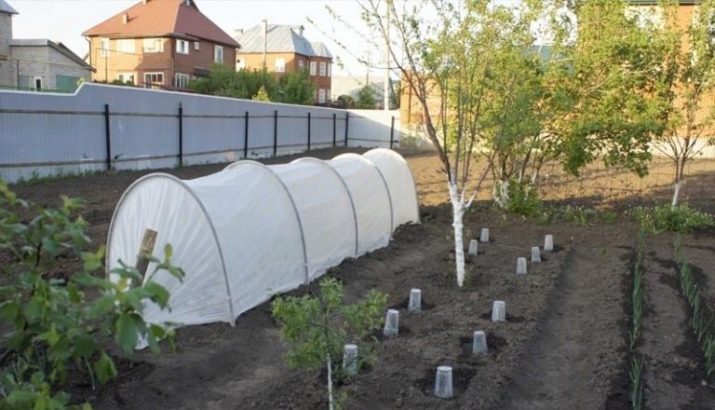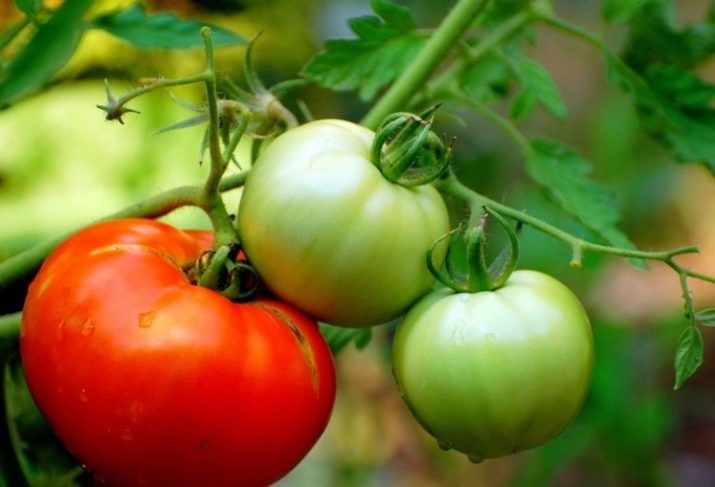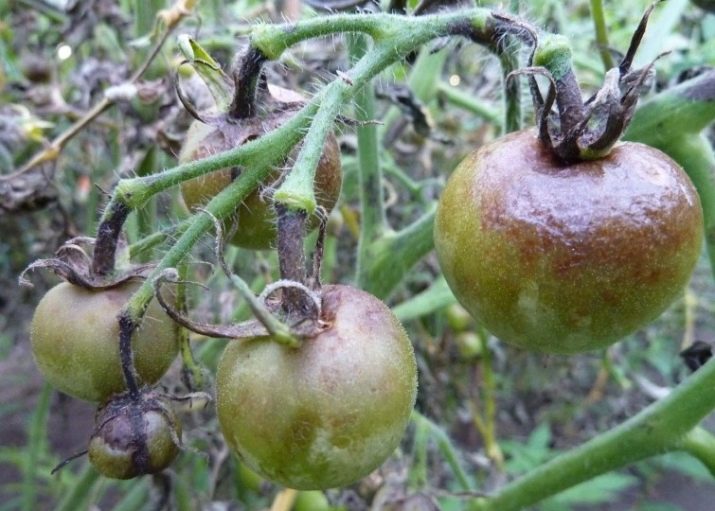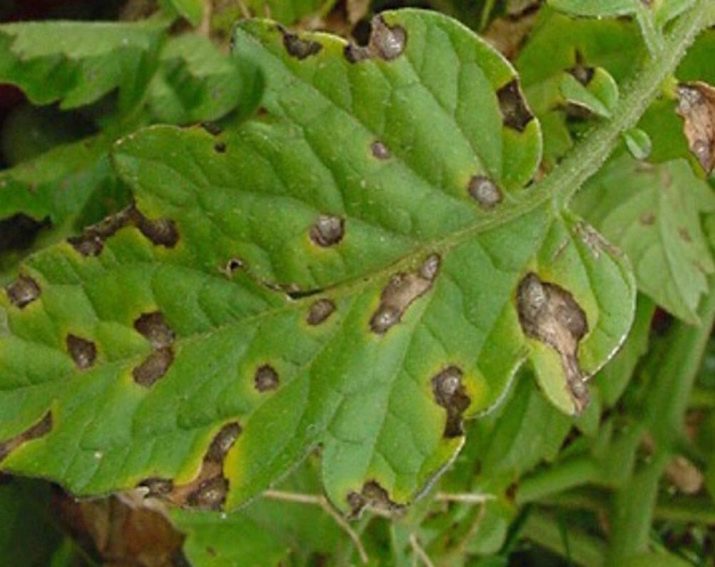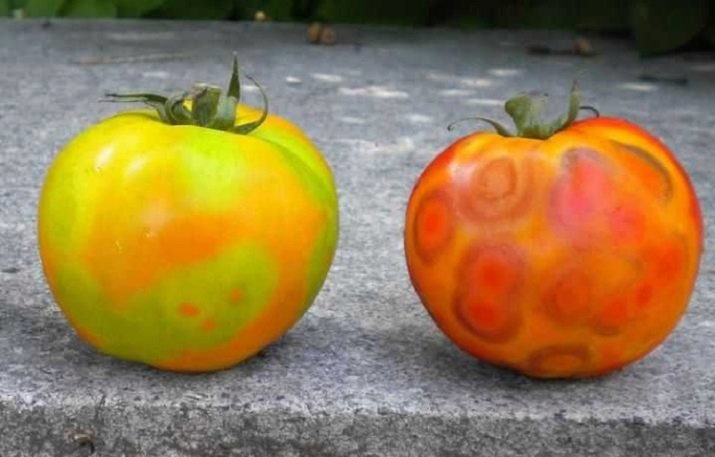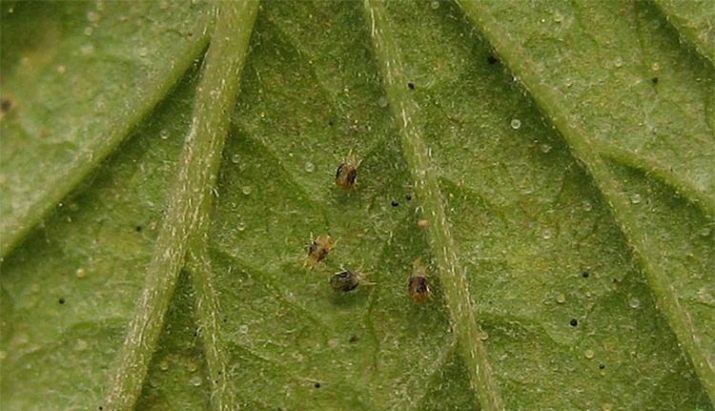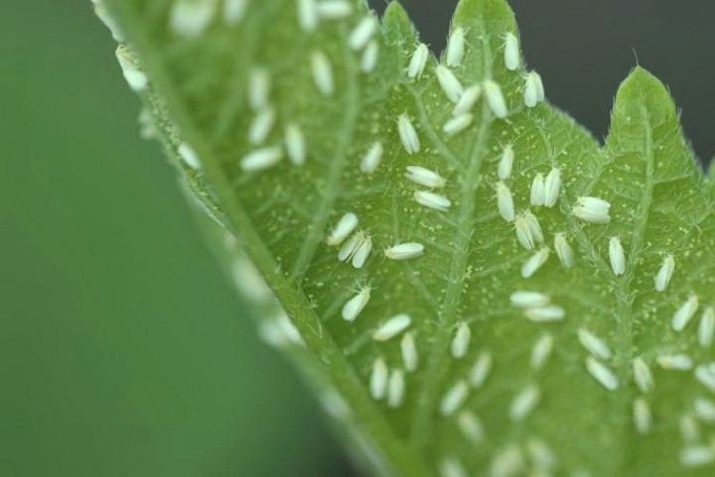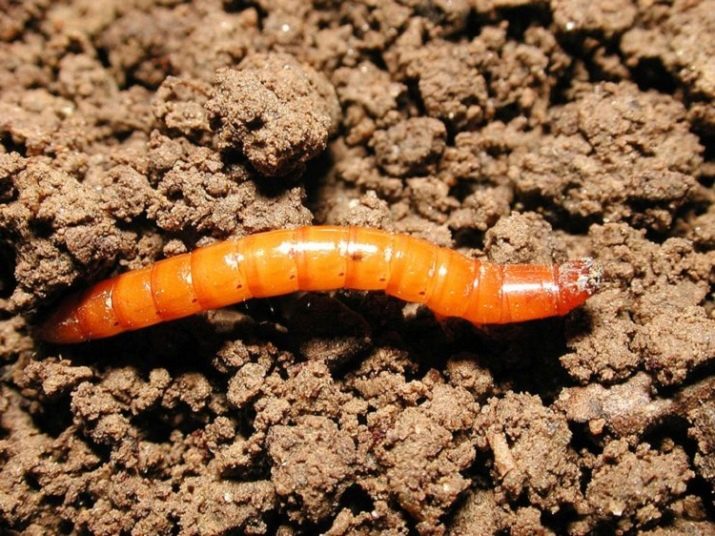Tomatoes "Liana": description, yield, cultivation
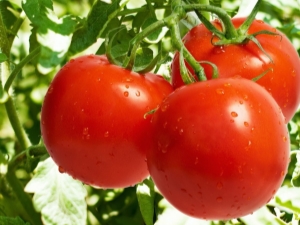
When it comes time to grow tomato seedlings, many gardeners think about what sort of tomato to sow. Everyone chooses already proven varieties, among which Liana occupies a special place.
Special features
Tomato "Liana" is one of the earliest varieties. After eighty days from the time of the first shoots, you can taste ripe tomatoes. Harvest at the same time can be collected almost before the start of frost.
You can grow tomatoes even in small areas both in open ground and in the greenhouse. However, as indicated in the description of the variety, bad weather conditions do not affect its yield.
The plant of this variety is quite compact. The height of the average bush reaches fifty centimeters. Such a tomato does not need much tying. In the greenhouses form a shrub of two or three stems, so it must be stepchain regularly. Fruits grow resilient and fragrant. They have a round shape and very bright color. As a rule, these are fruits of red or crimson color.
The weight of the fetus ranges from fifty to eighty grams. The yield of this variety is quite high: one bush can give from three to eight kilograms of tomatoes. The first flowers appear after the birth of the sixth leaf, the rest after one or two leaves.
Tomato "Liana" is distinguished not only by its pleasant taste, but also by a large number of useful elements. For example, the characteristic says that there are vitamins such as A, B and C in its composition. Therefore, it is very useful for both adults and children to eat such tomatoes as food.
Tomatoes "Liana" can be canned, pickled, and pickled. They make a great sauce, as well as baby puree. They are also suitable for making ketchup.
Virtues
There are more advantages to this variety than minuses. Among them it is worth noting the following:
- these tomatoes are very early - they can be tasted at the end of July;
- they ripen en masse, which allows you to harvest the crop in one to three times and make it pickles;
- such tomatoes are resistant to most diseases: tomatoes of this variety are not subject to fruit rot, and also have resistance to blotchiness (both dry and bacterial);
- have a rather pleasant and sweet taste;
- they are universal in cooking, and also have great nutritional value;
- Tomatoes have excellent transportability, they tolerate even long-distance transport very well, and are also stored for a long time (if the temperature is correctly maintained, then tomatoes can last up to three months);
- they have a high yield, so even in a small area you can grow a lot of tomatoes.
disadvantages
These tomatoes have several drawbacks:
- tomatoes "Liana" are afraid of such a virus as tobacco mosaic;
- they are attacked by various harmful insects;
- when grown in open ground may be subject to phytophthora.
How to grow?
Growing tomatoes can be divided into several stages, which should be considered in more detail.
Sowing
The initial stage is sowing seedlings. For this it is necessary to send the bottom of the tank with a layer of drainage so that the plants are not affected by a disease called “black leg”. It is necessary to take plastic cups and fill them five centimeters with a layer of pounded shells. A layer of earth is laid on top, after which it is necessary to pour all this with warm water and cover with plastic wrap. When it is five hours, the whole earth is steadily saturated with moisture.
The next step is the sowing of seeds. In the cups you need to make small grooves, not exceeding half a centimeter. This can be done with a toothpick. Then in each recess you must put one seed. It is also worth knowing that all the seeds, if they were bought unprocessed, must be processed by themselves in order for the plant to grow well. For this suitable solution of potassium permanganate.
With the help of the same toothpick, the seeds are sprinkled with earth and moistened with a flower sprayer. After that, you need to cover the cups with a film and put them in a warmer place. When the first shoots appear, the film is removed and the seedlings are transferred to a bright place, for example, on the window sill.
Disembarking
To begin planting tomatoes in late May or early June. At this time, the air temperature rises to twenty-five degrees during the day, and at night it does not fall below fifteen degrees. This temperature for seedlings is very important. It should be planted in the afternoon, when it becomes a little cooler. Tanks in which there are plants, it is necessary to pour abundantly with water about an hour before planting. This is done in order not to damage the roots.
Seedlings need to get out of the containers just before planting, as the sluggish plant develops much slower. Before that, you need to dig small holes, pour fertilizer there. This may be ashes, and humus, and mineral fertilizers. Then, carefully put one tomato sprout in each hole and pour water over it. After that the hole is covered with earth.
If tomatoes "Ljana" are short, they are planted at a distance of sixty centimeters between the rows and forty centimeters from each other. If the tomatoes are tall, then seventy centimeters are left between rows, and fifty centimeters between the plants themselves. It is better to plant them in a checkerboard pattern. Tomato sizes should be indicated on the package. If the seeds were bought in loose form, then this information should be obtained from the seller.
Planting tomatoes "Liana" should be done where formerly grown beans, cabbage, garlic or onions. It can also be done on those beds where cucumbers or zucchini were grown. In no case can not plant them in those gardens, where before it was potatoes or eggplants. This is done so that the plants do not suffer from the same diseases. If the garden is small and there is no possibility to plant tomatoes in another place, then it is necessary to sow in the fall to the place where tomatoes are planned to grow, green manures and be sure to dig the garden in spring. In this case, do not worry about the subsequent harvest.
If planting tomatoes is done a little before the specified time, you need to take care of their shelter. You can cover the tomatoes using plastic wrap or creating improvised greenhouses with arcs.
Care
To actively grow and develop tomatoes, they need good watering. Humidity should be at least eighty percent. Check without special device is quite possible. To do this, take a lump of earth, which was dug out of a pit ten centimeters deep, and squeeze it in your hand. If the lump is well molded, and when pressed, it crumbles quickly enough, then this means that there is enough moisture for the tomatoes. But after planting, they still need to be watered well.
Important in the care of a plant of this variety is fertilizing. This can be done both by folk methods and with the help of mineral fertilizers. From the popular recipes, it is worthwhile to isolate the watering with a solution of nettle, which contains many useful ingredients. To do this, it is collected before the appearance of seeds and pour water for two weeks. Watering can be done twice a month. However, after such a fertilizer, the plants must be watered well, because they need even stronger water.
Do not forget about weeding tomatoes. This should be done at least twice a month. Loosening the land allows the roots to breathe freely and receive life-giving moisture.
Tomatoes play a very important role in the care of plants. This is especially true for greenhouse cultivation. It is not necessary to form bushes in the open ground, because the “Lyan” variety is distinguished by its early and very friendly ripening of tomatoes.Therefore, grown-up stepchildren are best left in place: this will only increase the harvest. Already in late July, you can try the first fruits.
If the plants were bought undersized, then they do not need tying. High tomatoes must be tied up. This will allow the tomatoes to not fester, which means that the owners will be able to harvest the maximum yield.
Liana Tomatoes can be used for processing at any time of ripeness.
This variety is truly unique and has many positive differences from other varieties of tomatoes. If you listen to feedback from those who planted at least once such tomatoes, then they are mostly positive. Everyone notes the early ripening of tomatoes, excellent taste, and unpretentiousness to the growing conditions. Due to this, many of the farmers or ordinary gardeners began to grow this particular variety of tomatoes.
Diseases and pests
“Ljana” can please a person with its early harvest, however, some of the pests can cause irreparable damage to plants. Therefore, it is necessary to know everything about them and how to combat them, so that tomatoes get to people, not insects.
Late blight
The most common disease is late blight. It is preceded by the appearance of brown spots on the leaves and on the stems, and even on the fruits themselves. The disease spreads quickly enough, especially in too wet ground. To prevent it, it is necessary to monitor soil moisture, air temperature, and also to do watering only under the root.
For prevention it is necessary to use special preparations that can be found in any store with products for the garden. Also, many gardeners use folk remedies. The most popular option is to sprinkle tomatoes with a solution of garlic.
Cladosporiosis
This disease is also often called brown spot. In plants, lower leaves are affected. Cladosporiosis is a velvet color plaque that is a spore of fungi and can be transferred from one plant to another. But to protect plants is quite possible. For preventive maintenance, you can use "Fitosporin." They should be sprayed with plants once every three weeks.
Tobacco mosaic
This disease changes the shape of tomatoes and the color of the leaves. If the disease has already appeared, then it is necessary to remove all the plant and the land around it from the garden or greenhouse and burn it.
For preventive maintenance, you can use a drug such as "Farmayod." But it can also be safely replaced with a solution from the usual pharmacy iodine.
Also do not forget about the various pests. There are a large number of them, so it is worth considering the most common of them and ways of dealing with them.
Spider mite
This is a very small insect, which, as a rule, is located on the lower parts of the leaves. Spider mite pulls out all the juice from the tomatoes, and then entangles the leaves with cobwebs, and the plant dries out after a while. However, you need to know that this insect does not like a moist environment, therefore it is necessary to regularly water the plant and remove weeds near it so that there is more air around the tomato.
If the tick still appeared, then you can get rid of it with the help of all the same folk remedies. This may be, for example, a solution of onion peels or garlic.
White fly
Such an insect is small in size. It can harm tomatoes even at the larval stage. Most often such insects appear in greenhouses. To get rid of them, you can treat the plant with a drug such as "Phosbecid" or "Citcor".
Provider
These insects, as a rule, appear in greenhouses and infect tomatoes. They eat not only the stems of the plant, but also its roots. You can destroy it with a tool such as "Basudin". It must be mixed with sawdust, and then with the ground near the tomato.
Summarizing, we can say that, although it is not so easy to grow this variety of tomatoes, many people who have already tried the “Liang” variety recommend it to their friends and neighbors. If you properly care for this plant, then you can collect a truly large crop, which will be enough not only for preparing summer salads, but for canning tomatoes and pastes for the winter.
See the following video for tips on growing tomatoes.

